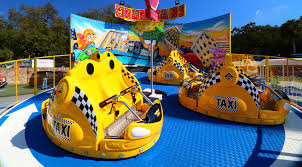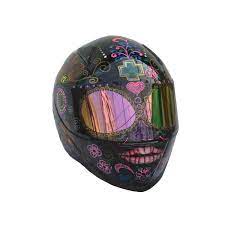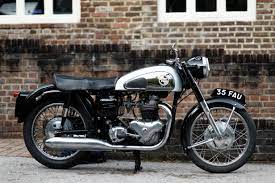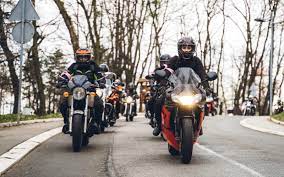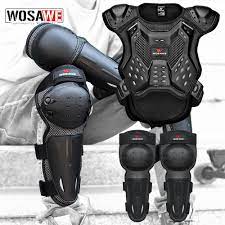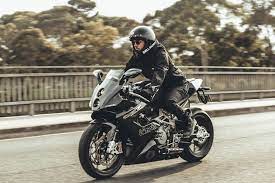
Motorcycle Riding: Embrace the Freedom on Two Wheels
There is something undeniably exhilarating about hitting the open road on a motorcycle. The wind in your face, the rumble of the engine beneath you, and the feeling of freedom that comes with every twist and turn. Motorcycle riding is not just a means of transportation; it’s a way of life.
For many riders, motorcycles are more than just machines; they are an extension of themselves. The connection between rider and bike is unique and profound. It’s a symbiotic relationship where both rider and machine work in harmony to create an unforgettable experience.
One of the most captivating aspects of motorcycle riding is the sense of freedom it provides. Unlike being confined within the four walls of a car, riding a motorcycle allows you to immerse yourself in your surroundings. You become one with the road, feeling every bump, curve, and change in terrain. It’s an intimate experience that connects you to nature and your surroundings in a way that no other form of transportation can.
But motorcycle riding isn’t just about freedom; it also requires skill and focus. Riding a motorcycle demands attention to detail, quick reflexes, and an acute awareness of your surroundings. It’s a constant dance between man and machine, where split-second decisions can make all the difference.
Moreover, being on a motorcycle exposes you to a whole new level of sensory stimulation. As you ride through different landscapes, you can feel the temperature change, smell the scents wafting through the air, and hear the symphony of sounds around you. Every ride becomes an adventure for your senses.
Motorcycle riding also offers a unique sense of camaraderie among riders. Whether it’s joining group rides or simply acknowledging fellow riders on the road with a nod or wave, there is an unspoken bond that exists among those who share this passion for two wheels. It’s like being part of an exclusive club, where you instantly connect with others who understand the thrill and joy of riding.
Of course, safety should always be a top priority when it comes to motorcycle riding. Wearing proper protective gear, following traffic rules, and continuously honing your riding skills are essential for a safe and enjoyable experience. Responsible riding ensures that you can continue to embrace the freedom of the open road for years to come.
So, if you’ve ever dreamed of feeling the wind in your face and exploring the world on two wheels, don’t hesitate to embrace motorcycle riding. It’s an adventure that will awaken your senses, challenge you, and provide a sense of freedom like no other. Join the vibrant community of riders who have discovered the joy of motorcycling and embark on an unforgettable journey that will leave you craving more. The road awaits – are you ready to ride?
6 Advantages of Motorcycle Riding: A Cost-effective, Time-saving, Eco-friendly, Fun, Easy to Park, and Health-Boosting Mode of Transport!
- Cost-effective – Motorcycles are a much more cost-efficient way to travel than cars, as they require less fuel and maintenance.
- Time saving – Motorcycles can often get through traffic faster than cars, saving you time on your journey.
- Eco-friendly – Motorcycles produce fewer emissions than cars, making them a greener form of transport.
- Fun – Riding a motorcycle is an enjoyable experience that offers freedom and adventure on the open road!
- Easy to park – Motorcycles are much easier to park than cars, as they take up less space and can fit into tighter spots.
- Health benefits – Riding a motorcycle regularly can help improve your physical fitness and mental wellbeing!
7 Cons of Motorcycle Riding: A Comprehensive Guide
- Poor visibility – Motorcycle riders are more difficult to spot on the roads due to their smaller size, and may be overlooked by other drivers.
- Expense – The cost of purchasing a motorcycle, as well as maintaining it and buying protective clothing can be expensive.
- Safety – Motorcycles do not provide the same level of protection as cars or other larger vehicles in accidents.
- Weather conditions – Riding in wet weather can be dangerous due to reduced traction and slippery surfaces.
- Noise pollution – Motorcycles are louder than cars which can be annoying for people living close to busy roads or highways where they are used frequently.
- Limited storage space – Most motorcycles have limited storage space for luggage or shopping bags, making them less practical than cars when travelling with multiple passengers or items that need transporting over long distances.
- Fatigue – Long distance motorcycle riding can cause fatigue due to the physical strain involved in controlling the bike over extended periods of time
Cost-effective – Motorcycles are a much more cost-efficient way to travel than cars, as they require less fuel and maintenance.
Cost-effective: The Financial Advantages of Motorcycle Riding
When it comes to transportation, motorcycles offer a distinct advantage over cars – they are a cost-effective means of travel. With rising fuel prices and the ever-increasing cost of car maintenance, motorcycles provide an affordable alternative that can save you money in the long run.
One of the most significant financial benefits of motorcycle riding is their fuel efficiency. Motorcycles typically have smaller engines and weigh less than cars, resulting in lower fuel consumption. This means you can travel further on a tank of petrol, reducing your overall fuel expenses. Whether you’re commuting to work or embarking on a weekend adventure, motorcycles prove to be an economical choice.
In addition to lower fuel costs, motorcycles also require less maintenance compared to cars. With fewer moving parts and simpler mechanical systems, motorcycles generally have lower servicing and repair costs. Routine maintenance tasks such as oil changes and tire replacements tend to be more affordable for motorcycles. This translates into long-term savings for riders.
Moreover, insurance premiums for motorcycles are often lower than those for cars. Insurance companies consider various factors when determining premiums, including the type of vehicle you ride. Motorcycles are typically associated with lower insurance costs due to their smaller size and reduced risk compared to cars. By opting for two wheels instead of four, riders can enjoy significant savings on their insurance bills.
Another financial advantage of motorcycle riding is the reduced parking fees in many urban areas. With limited parking spaces and high charges for car parking, motorcycles often benefit from discounted rates or even free parking in certain locations. This not only saves money but also provides greater convenience when navigating crowded city streets.
It’s worth noting that while motorcycles offer cost-effective benefits, safety should always be a priority. Investing in proper safety gear such as helmets, jackets, and gloves is essential for protecting yourself on the road. Additionally, enrolling in rider training courses can improve your skills and confidence as a motorcyclist, ensuring a safer riding experience.
In conclusion, motorcycle riding presents a compelling financial advantage – it’s a cost-effective mode of transport. With lower fuel consumption, reduced maintenance costs, and potentially lower insurance premiums, motorcycles offer significant savings compared to cars. By embracing the efficiency of two wheels, riders can enjoy not only the thrill of the open road but also the financial benefits that come with it. So, if you’re looking for an economical way to travel without compromising on adventure and freedom, consider hopping on a motorcycle and experiencing the joy of cost-effective riding.
Time saving – Motorcycles can often get through traffic faster than cars, saving you time on your journey.
Time Saving: Beat the Traffic on Two Wheels
In today’s fast-paced world, time is a precious commodity. The daily commute can often be a frustrating experience, especially when stuck in endless traffic jams. But fear not, for motorcycle riding offers a solution that can save you valuable time on your journey.
One of the significant advantages of riding a motorcycle is the ability to navigate through traffic with ease. Motorcycles are more agile and compact than cars, allowing riders to weave through congestion and reach their destination faster. While cars are confined to the lanes, motorcycles can slip through gaps and take advantage of their smaller size.
Imagine sitting in bumper-to-bumper traffic while watching motorcycles effortlessly glide past you. It’s an enviable sight for any car driver stuck in gridlock. With their nimble maneuverability, motorcycles have the upper hand when it comes to beating the traffic.
By choosing to ride a motorcycle, you can bypass long queues and make progress even during peak hours. This time-saving advantage not only reduces stress but also allows you to arrive at your destination more efficiently. Whether it’s getting to work on time or reaching an important appointment, motorcycle riding can make a noticeable difference in your daily routine.
Furthermore, shorter travel times mean less time spent behind the wheel and more time for other activities that matter to you. You could use those extra minutes or even hours for quality time with loved ones, pursuing hobbies and interests, or simply enjoying some well-deserved relaxation.
However, it’s crucial to remember that safety should always be prioritized when riding a motorcycle. Adhering to traffic rules, maintaining appropriate speeds, and being aware of other road users are essential for a safe journey. Responsible riding ensures that you can enjoy the time-saving benefits without compromising your well-being or that of others.
So, if you find yourself frustrated by never-ending traffic jams and long commutes, consider embracing motorcycle riding as an efficient alternative. Experience the thrill of zooming past stationary cars and reclaim your time on the road. With motorcycles, you can turn a tedious journey into an exciting adventure and arrive at your destination with a smile on your face. Time is precious, so why waste it in traffic when you can be riding towards freedom?
Eco-friendly: Embrace Greener Transportation with Motorcycles
In an era where environmental consciousness is becoming increasingly important, finding greener alternatives for transportation is crucial. Enter motorcycles, the two-wheeled wonders that offer a more eco-friendly way to get around.
One significant advantage of motorcycle riding is its minimal impact on the environment. Compared to cars, motorcycles produce fewer emissions, making them a greener form of transport. With their smaller engines and lighter weight, motorcycles are inherently more fuel-efficient. This means they consume less fuel and release fewer harmful pollutants into the atmosphere.
The reduced emissions from motorcycles contribute to cleaner air and a healthier environment. By choosing to ride a motorcycle instead of driving a car, you are actively reducing your carbon footprint and helping combat air pollution. It’s a small but meaningful step towards creating a more sustainable future.
Moreover, the eco-friendliness of motorcycles extends beyond their lower emissions. Motorcycles require less material to manufacture compared to cars, resulting in reduced resource consumption during production. They also take up less space on roads and in parking areas, alleviating congestion and promoting efficient land use.
Choosing a motorcycle as your mode of transportation not only benefits the environment but also offers personal advantages. With rising fuel costs, motorcycles provide an economical solution for commuting or running errands. Their fuel efficiency means you’ll spend less at the pump while enjoying the freedom of the open road.
Additionally, motorcycles can navigate through traffic more easily than cars, thanks to their compact size and maneuverability. This not only saves time but also reduces overall congestion on roads, leading to smoother traffic flow for everyone.
Of course, it’s essential to remember that responsible riding is key when it comes to maximizing the eco-friendliness of motorcycles. Adhering to traffic rules, maintaining your bike’s engine properly, and minimizing unnecessary idling all contribute towards reducing emissions further.
So why not consider embracing greener transportation by hopping on a motorcycle? By choosing this eco-friendly mode of transport, you’re not only reducing your impact on the environment but also enjoying the many benefits that motorcycles offer. Experience the thrill of riding while knowing that you’re making a positive difference for our planet. Ride green, ride responsibly, and be part of the movement towards a sustainable future.
Fun – Riding a motorcycle is an enjoyable experience that offers freedom and adventure on the open road!
There’s no denying that riding a motorcycle is an absolute blast. The thrill of the open road, the adrenaline rush as you twist the throttle, and the sheer joy of feeling the wind in your face – it all adds up to an incredibly fun experience.
Unlike being cooped up inside a car, riding a motorcycle allows you to fully immerse yourself in the journey. Every ride becomes an adventure, whether it’s exploring winding country roads or cruising through bustling city streets. The sense of freedom that comes with riding a motorcycle is unparalleled.
The pure joy of riding can be attributed to several factors. Firstly, there’s the exhilaration of speed. Feeling the power of the engine beneath you as you accelerate down the road is an adrenaline rush like no other. It’s a thrilling sensation that brings out your inner daredevil and leaves you craving more.
Secondly, there’s a sense of connection with both your bike and the environment around you. Riding a motorcycle requires a level of skill and focus that keeps your mind engaged and your senses heightened. You become one with your machine, anticipating every turn and maneuvering effortlessly through traffic. It’s an empowering feeling that boosts confidence and creates a unique bond between rider and bike.
Additionally, motorcycle riding allows you to explore new places in ways that other modes of transportation simply can’t match. You have the freedom to take scenic detours, discover hidden gems off the beaten path, and truly soak in your surroundings. Whether it’s breathtaking landscapes or vibrant cityscapes, every ride becomes an opportunity for discovery and adventure.
Moreover, riding a motorcycle offers an escape from daily stresses and worries. The combination of fresh air, open spaces, and focused concentration provides a much-needed break from the demands of everyday life. It allows you to clear your mind, live in the present moment, and experience a sense of freedom that is hard to find elsewhere.
However, it’s important to remember that fun should always be balanced with responsibility and safety. Wearing proper protective gear, obeying traffic laws, and riding within your limits are crucial for a safe and enjoyable experience. By prioritizing safety, you can fully embrace the fun of motorcycle riding without compromising your well-being.
In conclusion, motorcycle riding is undeniably fun. It offers a unique blend of freedom, adventure, and exhilaration that is hard to find in any other activity. So, if you’re seeking an enjoyable experience that will leave you with unforgettable memories and a constant craving for more, hop on a motorcycle and let the fun begin!
Easy to park – Motorcycles are much easier to park than cars, as they take up less space and can fit into tighter spots.
Easy to Park: Embrace the Convenience of Motorcycle Riding
When it comes to finding a parking spot, motorcycles have a distinct advantage over cars. With their compact size and nimble maneuverability, motorcycles can easily fit into tight spots and take up less space. This makes parking a breeze and adds an extra layer of convenience to the overall riding experience.
Unlike cars, which often require searching for larger parking spaces or navigating crowded lots, motorcycles offer the freedom to park in places that would be impossible for four-wheeled vehicles. Whether it’s squeezing into a small gap between cars or utilizing designated motorcycle parking areas, riders have more options when it comes to finding a suitable spot.
The ability to park in tighter spaces means that motorcycle riders can save time and avoid the frustration of circling around in search of an available parking space. It’s not uncommon to see motorcycles neatly tucked away in corners or occupying small gaps that would otherwise go unused. This efficiency allows riders to reach their destinations quicker and with less hassle.
Furthermore, the ease of parking extends beyond urban areas. When exploring scenic routes or venturing into nature, finding suitable parking spots can be challenging. However, with their smaller footprint, motorcycles can easily find a spot along the roadside or in designated pull-off areas. This allows riders to pause and take in breathtaking views or explore hidden gems without worrying about finding ample parking space.
Additionally, motorcycles are often allowed to park for free or at reduced rates in certain areas that may charge higher fees for cars. This cost-saving benefit is an added advantage for riders who want to make the most out of their trips without breaking the bank.
However, it is important for motorcycle riders to park responsibly and considerately. Being mindful of other vehicles, pedestrians, and following local regulations ensures that everyone can share limited parking spaces harmoniously.
In conclusion, one of the significant advantages of motorcycle riding is its ease of parking. The ability to fit into tighter spots and take up less space makes finding a parking spot a hassle-free experience. Whether it’s in bustling city centers or remote scenic areas, motorcycles offer convenience, time-saving benefits, and cost advantages that enhance the overall riding experience. So, embrace the ease of parking that motorcycle riding provides and enjoy the freedom to explore without the worry of finding a suitable spot for your two-wheeled companion.
Health benefits – Riding a motorcycle regularly can help improve your physical fitness and mental wellbeing!
Health Benefits of Motorcycle Riding: Rev Up Your Fitness and Wellbeing!
Did you know that motorcycle riding offers more than just a thrilling experience? It can also have significant health benefits for both your body and mind. Whether you’re a seasoned rider or just starting out, hopping on a motorcycle regularly can contribute to improving your physical fitness and mental wellbeing.
Firstly, motorcycle riding is an excellent way to stay active. Unlike driving a car, riding a motorcycle engages your entire body. Balancing the bike, shifting gears, and maneuvering through traffic require core strength, coordination, and muscle control. Even during leisurely rides, you’ll be surprised at how many muscles are engaged as you navigate turns and maintain stability.
Additionally, riding a motorcycle can provide an effective cardiovascular workout. As you cruise along the roads, the increased heart rate and improved blood circulation contribute to better cardiovascular health. It’s an enjoyable way to get your heart pumping while experiencing the freedom of the open road.
Apart from physical fitness benefits, motorcycle riding can also positively impact your mental wellbeing. The sense of freedom and adventure that comes with riding can be incredibly therapeutic. The focus required to ride safely helps clear the mind of daily stresses and worries, allowing you to be present in the moment.
Moreover, being out in nature while on a motorcycle ride can have calming effects on the mind. The fresh air, scenic landscapes, and the feeling of being connected with nature create a sense of tranquility. It’s like meditation on wheels!
The social aspect of motorcycling also contributes to mental wellbeing. Joining group rides or connecting with fellow riders allows you to build friendships based on shared interests and experiences. Being part of a community that understands your passion for motorcycles fosters a sense of belonging and support.
Of course, it’s essential to prioritize safety while reaping these health benefits from motorcycle riding. Wearing appropriate protective gear such as helmets, gloves, jackets, and boots is crucial. Additionally, staying alert, obeying traffic rules, and continuously improving your riding skills through training courses are essential for a safe and enjoyable experience.
So, if you’re looking for a fun and dynamic way to improve your physical fitness and mental wellbeing, consider motorcycle riding. Embrace the open road, feel the wind on your face, and let the benefits of this exhilarating activity enhance your overall health. Remember to ride responsibly and enjoy the journey towards a healthier you!
Poor visibility – Motorcycle riders are more difficult to spot on the roads due to their smaller size, and may be overlooked by other drivers.
Poor Visibility: The Challenge of Spotting Motorcycle Riders on the Road
One of the significant cons of motorcycle riding is the issue of poor visibility. Motorcycles, with their smaller size compared to cars and trucks, can sometimes be easily overlooked by other drivers on the road. This poses a significant risk to riders and calls for increased attention and caution from both motorcyclists and other road users.
The compact nature of motorcycles means that they occupy less space on the road, making them more challenging to spot in traffic. Other drivers may unintentionally overlook motorcycles when changing lanes, making turns, or merging onto roads. This lack of visibility can lead to dangerous situations and increase the likelihood of accidents.
To address this issue, it is crucial for motorcyclists to take proactive measures to enhance their visibility. Wearing bright, high-visibility clothing or reflective gear can significantly improve a rider’s chances of being noticed by other drivers. Additionally, using headlights during daytime riding can also help increase visibility.
Other road users also have a responsibility to be more aware of motorcycles and actively look out for them. Checking blind spots thoroughly before changing lanes, using indicators appropriately, and giving motorcycles ample space on the road are all important practices that can contribute to safer interactions between vehicles.
Education plays a vital role in raising awareness about the challenges faced by motorcycle riders due to poor visibility. Driver training programs should emphasize the importance of looking out for motorcycles and provide guidance on how to share the road safely with them. By promoting mutual respect and understanding between motorists and motorcyclists, we can work towards reducing accidents caused by poor visibility.
While poor visibility remains a con of motorcycle riding, it is not an insurmountable challenge. By staying vigilant, employing visibility-enhancing measures, and fostering a culture of awareness on our roads, we can ensure safer journeys for all road users. Let us strive towards creating an environment where motorcycles are seen and respected as an integral part of our diverse transportation landscape.
Expense – The cost of purchasing a motorcycle, as well as maintaining it and buying protective clothing can be expensive.
Expense – The Financial Considerations of Motorcycle Riding
While motorcycle riding offers a thrilling and liberating experience, it’s important to acknowledge that there are financial aspects to consider. One significant con of motorcycle riding is the expense associated with purchasing, maintaining, and equipping yourself with protective gear.
Firstly, the initial cost of purchasing a motorcycle can be a considerable investment. Motorcycles come in various models and price ranges, so finding one that suits your preferences and budget is essential. It’s important to research different options, consider factors such as engine size, brand reputation, and reliability before making a purchase decision.
Additionally, maintaining a motorcycle can sometimes be more costly than maintaining a car. Regular servicing, oil changes, tire replacements, and other maintenance tasks are necessary to keep your bike in optimal condition. These expenses can add up over time and should be factored into your budget.
Another financial consideration is the need for protective clothing. Safety gear such as helmets, jackets, gloves, boots, and pants are crucial for rider protection. While these items are essential for your safety on the road, they can also be quite expensive. However, investing in high-quality gear is vital to ensure maximum protection in case of an accident.
Insurance costs should also be taken into account when considering the expense of motorcycle riding. Insurance premiums vary based on factors such as your age, riding experience, type of bike owned, and location. It’s crucial to obtain comprehensive insurance coverage that includes liability protection as well as coverage for theft or damage.
However, despite these financial considerations, many riders find ways to manage their expenses effectively. For instance, joining rider clubs or online communities can provide access to group discounts on gear or maintenance services. Learning basic motorcycle maintenance skills can also help reduce costs by allowing you to perform some tasks yourself.
Ultimately, while there are expenses associated with motorcycle riding that cannot be ignored or overlooked; many riders believe that the benefits outweigh the financial considerations. The sense of freedom, the thrill of the open road, and the camaraderie among fellow riders often make it a worthwhile investment.
It’s important to approach motorcycle riding with a realistic understanding of the financial commitments involved. By carefully budgeting and making informed decisions, you can enjoy the joys of riding while managing your expenses effectively. So, if you’re prepared to embrace the adventure and experience the unique world of motorcycle riding, be sure to plan ahead and make smart financial choices along the way.
Safety – Motorcycles do not provide the same level of protection as cars or other larger vehicles in accidents.
Safety: The Importance of Protective Measures in Motorcycle Riding
Motorcycle riding is undoubtedly an exhilarating and liberating experience, but it’s essential to acknowledge the potential risks involved. One significant con of motorcycle riding is the inherent lack of protection compared to cars or larger vehicles in accidents.
Unlike cars, motorcycles do not have the same level of physical protection surrounding the rider. In a collision, riders are more exposed to impact and potential injuries. This vulnerability highlights the need for motorcyclists to take extra precautions and prioritize safety at all times.
To mitigate this risk, responsible riders understand the importance of wearing proper protective gear. A well-fitting helmet, sturdy boots, gloves, and durable clothing designed for motorcycle riding can significantly reduce the severity of injuries in case of an accident. These protective measures act as a crucial barrier between the rider and potential harm.
Furthermore, defensive riding techniques play a vital role in enhancing safety on the road. Motorcyclists must remain vigilant and anticipate potential hazards by constantly scanning their surroundings, maintaining safe distances from other vehicles, and being mindful of blind spots. Defensive riding helps minimize the chances of accidents caused by factors beyond a rider’s control.
Another aspect that contributes to safety is ongoing training and skill development. Riders should continuously strive to improve their riding abilities through advanced training courses or refresher programs. These courses provide valuable insights into defensive maneuvers, emergency braking techniques, and hazard awareness – all essential skills that can save lives on the road.
It’s also crucial for motorcyclists to be aware of their limitations and ride within their capabilities. Understanding one’s skill level helps prevent risky maneuvers or excessive speeds that could increase the likelihood of accidents.
Lastly, fostering a safety-conscious mindset within both riders and other road users is paramount. Raising awareness about sharing the road responsibly can help reduce accidents involving motorcycles. Encouraging mutual respect between drivers of all vehicles promotes a safer environment for everyone on the road.
While it is true that motorcycles do not provide the same level of protection as cars or larger vehicles, it’s important to remember that with proper precautions and responsible riding practices, many potential risks can be minimized. By prioritizing safety through protective gear, defensive riding techniques, ongoing training, and promoting a safety-conscious culture on the road, motorcyclists can enjoy their passion while reducing the likelihood of accidents and injuries.
So, let’s embrace the thrill of motorcycle riding while keeping safety at the forefront. By taking these necessary precautions, we can continue to enjoy the freedom of two wheels while minimizing the potential dangers associated with this incredible mode of transportation.
Weather conditions – Riding in wet weather can be dangerous due to reduced traction and slippery surfaces.
Weather conditions can pose a significant challenge for motorcycle riders, particularly when it comes to riding in wet weather. The reduced traction and slippery surfaces that come with rain can make for a potentially dangerous situation on the road.
One of the main concerns when riding in wet weather is the decreased traction between the tires and the road surface. Rainwater creates a thin layer between the tires and the road, reducing grip and making it harder to maintain control of the motorcycle. This lack of traction increases the risk of skidding, sliding, or losing control, especially when cornering or braking.
Slippery surfaces also become a major hazard during wet weather riding. Road markings, manhole covers, painted lines, and even fallen leaves can become treacherous obstacles as they become slick when wet. These surfaces can compromise stability and make it more challenging to navigate safely.
Visibility is another issue that arises when riding in rainy conditions. Rainfall reduces visibility by creating a misty haze on helmets visors or windshields. This can hinder a rider’s ability to see clearly ahead, increasing the chances of missing important road signs or hazards.
Furthermore, other road users may also struggle with visibility during rainy conditions, leading to potential hazards for motorcyclists. Car drivers may have reduced visibility due to fogged-up windows or heavy rain, making it harder for them to notice motorcycles sharing the road.
To mitigate these risks associated with wet weather riding, there are several precautions that riders should take. Firstly, ensuring that tires are properly maintained with adequate tread depth is crucial for improved traction on wet surfaces. Additionally, riders should adjust their speed according to the conditions and avoid sudden braking or acceleration to minimize skidding risks.
Wearing appropriate protective gear designed for wet weather conditions is also essential. Waterproof jackets and trousers along with gloves and boots that provide good grip can help keep riders dry and maintain better control over their bikes.
Finally, maintaining a safe distance from other vehicles and being extra vigilant on the road can help compensate for reduced visibility caused by rain. Anticipating potential hazards and adjusting riding techniques accordingly can go a long way in ensuring a safer experience in wet weather conditions.
While riding in wet weather does present challenges, being aware of the risks and taking appropriate precautions can help mitigate them. By staying informed, prepared, and exercising caution, motorcycle riders can navigate through rainy conditions more safely, ensuring that their love for riding is not dampened by the weather.
Noise pollution – Motorcycles are louder than cars which can be annoying for people living close to busy roads or highways where they are used frequently.
Noise Pollution: Addressing the Concerns of Motorcycle Riding
While motorcycle riding offers a multitude of benefits and joys, it is important to acknowledge the concerns raised by some regarding noise pollution. Motorcycles are often louder than cars, which can be a source of annoyance for those living close to busy roads or highways where they are frequently used.
The distinctive sound of a motorcycle engine has long been associated with the freedom and thrill of riding. It adds to the overall experience and can be an integral part of the rider’s identity. However, it is essential to strike a balance between enjoying the ride and being considerate towards others in our communities.
Recognizing this concern, responsible riders have taken steps to address noise pollution issues. Manufacturers have developed quieter exhaust systems that comply with noise regulations without compromising performance. These systems help reduce the impact on surrounding areas while still allowing riders to enjoy their motorcycles.
Furthermore, many motorcyclists actively engage in initiatives promoting responsible riding practices. They understand that excessive noise can disturb peace and tranquility in residential areas. By adhering to speed limits, avoiding unnecessary revving, and being mindful of their surroundings, riders can play their part in minimizing noise pollution.
Local authorities also play a crucial role in managing this issue effectively. By enforcing noise regulations and implementing measures such as sound barriers along busy roads or designated motorcycle lanes away from residential areas, they can mitigate the impact on local communities.
Education and awareness campaigns are equally important in addressing concerns related to noise pollution caused by motorcycles. Encouraging riders to be considerate towards others and educating them about the consequences of excessive noise can foster a more harmonious coexistence between riders and residents.
It is vital for both motorcyclists and non-riders alike to engage in open dialogue and find common ground on this matter. By understanding each other’s perspectives, we can work together towards finding practical solutions that balance the enjoyment of motorcycle riding with respect for our communities.
In conclusion, noise pollution is a valid concern associated with motorcycle riding. However, it is an issue that can be effectively addressed through responsible riding practices, technological advancements in exhaust systems, and collaborative efforts between riders, authorities, and residents. By embracing a considerate approach, we can ensure that the joy of motorcycling is experienced without causing unnecessary disturbance to those around us.
Limited Storage Space: A Challenge for Motorcycle Riders
Motorcycle riding is undoubtedly an exhilarating experience, but like any mode of transportation, it has its drawbacks. One of the notable cons of motorcycle riding is the limited storage space available. Unlike cars that offer ample trunk space or backseats for luggage and shopping bags, motorcycles often lack the practicality when it comes to transporting multiple passengers or carrying items over long distances.
The compact design of motorcycles is what makes them agile and nimble on the road. However, this very feature also limits the amount of storage space available. Most motorcycles are equipped with small compartments or saddlebags that can accommodate essentials like a wallet, phone, or a few small personal items. While these compartments are convenient for storing everyday necessities, they fall short when it comes to larger items or multiple bags.
This limitation can pose a challenge for riders who need to transport groceries, camping gear, or luggage for longer trips. Unlike cars where you can easily pack everything you need in the trunk or backseat, motorcycle riders must carefully consider what they can carry and how to distribute the weight evenly to maintain balance and stability on the road.
Fortunately, there are solutions available to mitigate this con. Many riders invest in additional storage options such as tail bags, tank bags, or top cases that attach securely to their motorcycles. These accessories provide extra space for carrying larger items without compromising safety or maneuverability. Additionally, there are specially designed backpacks and cargo nets that allow riders to secure their belongings more effectively.
Moreover, careful planning and organization can go a long way in maximizing the limited storage space on a motorcycle. Packing strategically by utilizing compression sacks or smaller containers can help optimize space while keeping belongings secure during the ride.
It’s important to note that while limited storage space may be a disadvantage of motorcycle riding, it doesn’t outweigh the many benefits and joys that come with this mode of transportation. The thrill of riding, the freedom of the open road, and the unique connection with your surroundings are experiences that many riders cherish.
Ultimately, motorcycle riders understand and accept the trade-off of limited storage space for the incredible sense of freedom and adventure that riding provides. It’s about embracing a different way of traveling, where simplicity and minimalism become part of the journey.
So, while it’s true that motorcycles may have limitations when it comes to storage space, resourceful riders can find ways to overcome this challenge. With careful planning, proper accessories, and a mindset focused on enjoying the ride rather than carrying excess baggage, motorcycle riding remains an exciting and fulfilling experience for those who seek the thrill of two wheels on the open road.
Fatigue – Long distance motorcycle riding can cause fatigue due to the physical strain involved in controlling the bike over extended periods of time
Fatigue in Motorcycle Riding: Overcoming the Challenges of Long-Distance Rides
Motorcycle riding is undoubtedly an exhilarating experience, but it’s important to acknowledge the challenges that come with it. One such challenge is fatigue, particularly during long-distance rides. The physical strain involved in controlling a motorcycle over extended periods of time can take a toll on even the most seasoned riders.
When embarking on a long ride, whether it’s a cross-country adventure or a weekend getaway, it’s essential to be aware of the potential for fatigue. The constant adjustments and movements required to maintain balance and control can lead to muscle fatigue and overall exhaustion.
The physical demands of motorcycle riding are undeniable. Constantly gripping the handlebars, using your core muscles for stability, and maintaining proper posture all require energy and endurance. Add in factors like wind resistance and varying road conditions, and it becomes clear why fatigue can become a concern during long rides.
However, there are ways to overcome this challenge and ensure a safer and more enjoyable journey. Firstly, adequate rest before embarking on a long ride is crucial. Make sure you are well-rested and refreshed before hitting the road. This will help you start your journey with energy reserves that can sustain you throughout the ride.
During the ride itself, taking regular breaks is essential. Plan your route in advance and identify suitable rest stops where you can stretch your legs, hydrate, and give yourself a mental break from the constant focus required while riding. These breaks not only alleviate physical fatigue but also help improve mental alertness.
Proper hydration and nutrition also play vital roles in combating fatigue during long-distance rides. Dehydration can quickly lead to decreased energy levels and impaired concentration. Carry an adequate supply of water or electrolyte-rich drinks to stay hydrated throughout your journey. Additionally, fueling your body with nutritious snacks or meals at regular intervals will provide sustained energy levels.
Another helpful tip is to incorporate stretching exercises during breaks. This helps alleviate muscle tension, improves blood circulation, and reduces the risk of cramps or stiffness. Simple stretches for your neck, shoulders, back, and legs can go a long way in combating fatigue and maintaining comfort on the bike.
Lastly, listen to your body. If you start feeling excessively fatigued or find your concentration waning, it’s crucial to recognize the signs and take appropriate action. This might mean shortening your ride or finding a safe place to rest until you regain your energy.
While fatigue is a con of motorcycle riding, it’s important to remember that with proper planning and self-care, it can be managed effectively. By being mindful of your physical limits, taking regular breaks, staying hydrated, and listening to your body’s needs, you can overcome fatigue and enjoy the thrill of long-distance rides while prioritizing safety and well-being.
So gear up responsibly, plan ahead, and embrace the adventure of long-distance motorcycle riding while taking proactive measures to combat fatigue. With the right approach and mindset, you can conquer any challenge that comes your way on two wheels.



